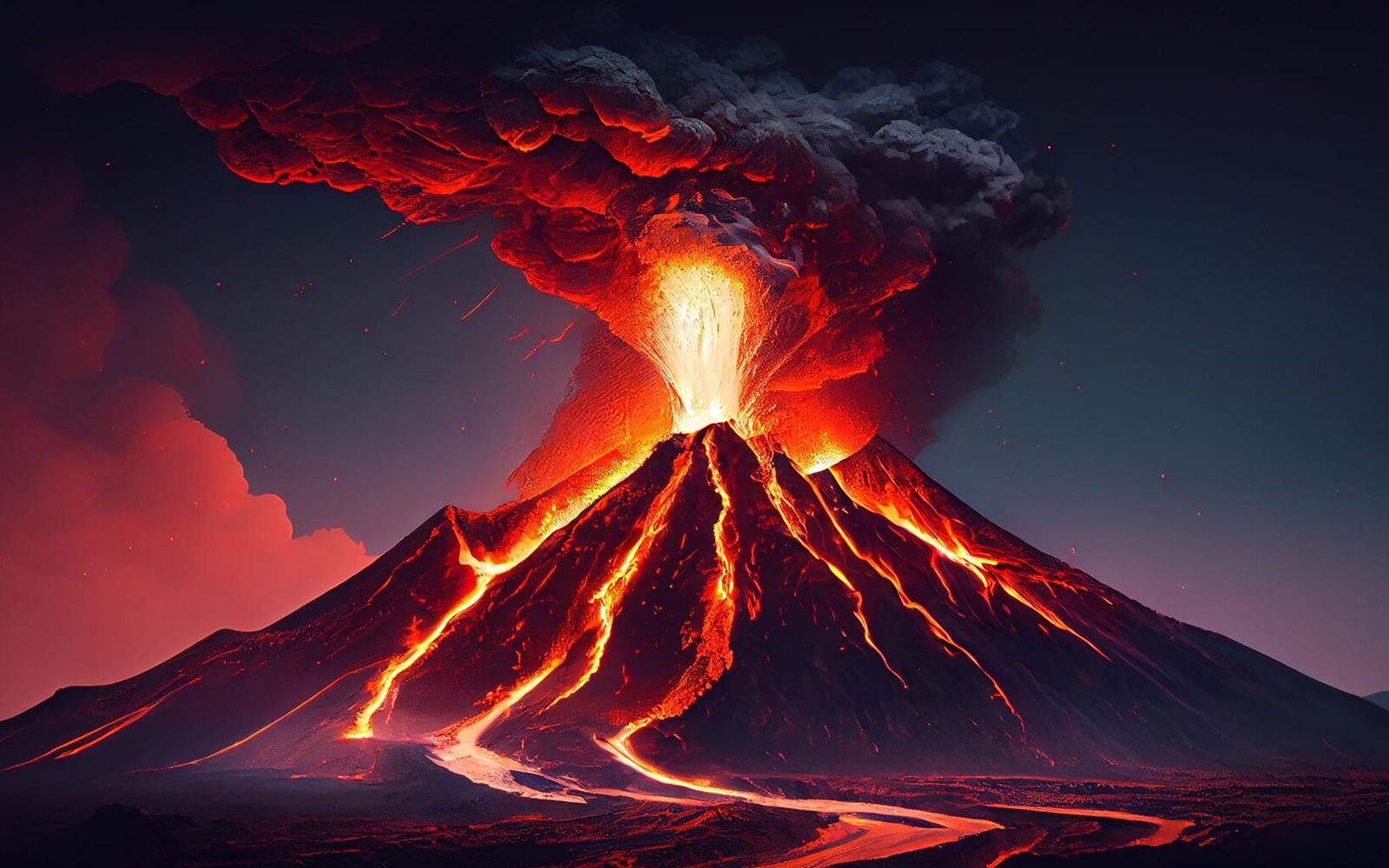
In the winter of 2022, a scientific expedition known as IODP 398 (International Ocean Discovery Program) took place in the southern part of the Aegean Sea.
During this expedition, the research vessel JOIDES Resolution retrieved over 780 ten-meter-long cylindrical metal tubes filled with various layers of rocks and sediments drilled from the sea floor.
Onboard this former oil exploration ship was Molly Colleen McCanta, an associate professor of petrology and planetary geosciences from the University of Tennessee. She shared the most significant findings with The Conversation. The deep-sea drills were crucial in uncovering the volcanic history of the region near the Greek island of Santorini.
Discovery of an Unknown Volcanic Eruption
The most remarkable discovery was a massive volcanic eruption that occurred over 500,000 years ago, previously unknown to scientists. McCanta stated, “This discovery expands our understanding of volcanic activity in the chain of volcanoes forming the South Aegean volcanic arc, allowing for a more accurate hazard analysis in the area.”
The volcanic eruption on Santorini around 1600 BC continues to fascinate archaeologists and geologists, as it is often linked to the decline of the Minoan civilization on Crete. The region is of particular interest due to its volatile volcanic and seismic activity. However, the documentation of Santorini’s volcano is incomplete because ancient volcanic deposits are often covered by erosion, vegetation, and subsequent eruptions.
Unlocking the Geological Records
Deep-sea drilling provides scientists access to geological records preserved on the sea floor. Over time, pyroclastic materials from eruptions, including rock fragments and ash, settle and form distinct layers. Clays and biological materials continually settle, covering the volcanic deposits, creating a well-preserved chronological record. This process allows scientists to map the volcanic history of the region.
IODP 398 Expedition
The IODP 398 expedition conducted deep-sea drilling to better understand the volcanic history and periodic activity of the Santorini, Christiana, and Kolumbo volcanoes. The expedition carried out twelve drills, reaching depths of up to 900 meters below the sea floor, collecting over 780 samples.
Each sample was cut into 1.5-meter sections for detailed analysis and description. The material underwent physical analysis, including measurements of magnetic susceptibility, and experts documented the geological composition of each layer of rock obtained.
As the head of the geochemistry laboratory, McCanta collected samples of volcanic rock and ash, analyzing their composition. She aimed to identify the volcanic origins of the samples through chemical changes in the magma that occur during eruptions.
Discoveries Within the Rock Layers
Detailed analysis revealed several thick white layers of pumice found in multiple basins. These discoveries were dated using biostratigraphy—a method that uses fossils within sediment layers to date rock ages—to the same period, between 510,000 and 530,000 years ago. Geochemical correlation confirmed the same composition across all layers.
The consistency of these layers across several basins allowed scientists to model the size of the eruption that created them. Based on the data, the researchers determined that the volcanic deposits amounted to approximately 90 cubic kilometers, with thicknesses reaching up to 150 meters in some areas. The volcanic rock layer covers an area of 3,000 square kilometers in the southern Aegean Sea.
Naming the Ancient Deposit
The researchers named the deposit “Archeos Tuff” from the Greek word “archea,” meaning ancient. This name reflects the origin and age of the rock, which predates most volcanic activity remnants on land. Archeos Tuff resulted from a single, highly intense eruption. The vesicles in the rock indicate the simultaneous release of liquid magma and gas, pointing to an unusually powerful eruption.
The South Aegean Volcanic Arc
This eruption differs from known land deposits, but the relative lack of terrestrial material suggests it was a submarine eruption. Scientists could link the newly discovered deep-sea volcanic sediment layer to minor deposits on land on the islands of Santorini, Christiana, and Anafi.
The researchers concluded that the eruption producing Archeos Tuff was six times larger than the famous eruption during the Minoan Bronze Age, which left more substantial deposits. The presence of such a large volcanic deposit indicates that the South Aegean volcanic arc can trigger more significant submarine eruptions than previously thought.
The results of this scientific investigation were published in January this year in the esteemed journal Nature Communications Earth & Environment. This periodical focuses on publishing research findings in the earth and environmental sciences, ensuring high quality and credibility through a rigorous peer-review process.


